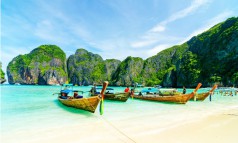



















Monday, May 19, 2025 09:30 [IST]
Last Update: Sunday, May 18, 2025 16:27 [IST]
The longstanding rivalry between India and Pakistan has taken on a new dimension in the digital age, shifting from traditional battlefields to the vast, intangible arena of social media. This information war, fueled by platforms like X, Facebook, Instagram, and YouTube, has become a critical front where both nations strive to shape narratives, influence global opinion, and assert dominance in the court of public perception. The recent flare-up of tensions in May 2025, centered around the perennial issue of Kashmir, has amplified this digital conflict, with both countries leveraging social media to project their version of events. This article explores the dynamics of the India-Pakistan social media war, examining its strategies, impacts, and challenges in the context of their broader geopolitical rivalry.
The advent of social media has fundamentally transformed the way conflicts are waged and perceived. In earlier decades, information about wars and disputes was disseminated primarily through traditional media outlets like newspapers, television, and radio, often controlled or heavily influenced by state mechanisms. These channels offered limited scope for real-time engagement or mass participation. Today, social media platforms have democratized information dissemination, allowing governments, military institutions, and ordinary citizens to directly share content with global audiences. For India and Pakistan, this has created an unprecedented opportunity to craft and amplify narratives that align with their strategic interests. However, it has also introduced complexities, as the rapid spread of information—often unverified or manipulated—can escalate tensions and polarize societies.
The latest chapter in this digital war unfolded in May 2025, following a series of military skirmishes along the Line of Control (LoC) in Kashmir. Both nations quickly turned to social media to present their accounts of the events. India’s Ministry of Defence released statements and visuals on X, claiming that its “Operation Sindur” successfully neutralized terrorist infrastructure in Pakistan-administered Kashmir. Posts included high-resolution images of alleged militant camps and videos of precise military strikes, designed to project strength and decisiveness. Conversely, Pakistan’s Inter-Services Public Relations (ISPR) countered with its own media blitz, asserting that it had repelled Indian aggression and inflicted significant losses. Videos purportedly showing downed Indian drones and captured equipment circulated widely, accompanied by hashtags aimed at rallying domestic support and garnering international sympathy.
A defining feature of this information war is the proliferation of misinformation and propaganda. Both sides have accused each other of spreading falsehoods to mislead audiences. For instance, a video released by Pakistan’s ISPR, depicting what it claimed was evidence of Indian military failures, was later debunked by India’s Press Information Bureau (PIB) as manipulated footage from an unrelated incident. Similarly, India faced accusations of using outdated images to exaggerate the success of its operations. Fact-checking organizations and independent analysts have struggled to keep pace with the deluge of doctored content, as both nations deploy sophisticated digital tools to amplify their narratives. The use of bots and coordinated trolling campaigns has further muddied the waters, with thousands of automated accounts amplifying hashtags like #India Strikes Back and #Pakistan Stands Strong to dominate online discourse.
The strategies employed in this social media war are multifaceted and increasingly professionalized. Both India and Pakistan have engaged digital marketing firms and public relations experts to craft compelling narratives. India’s approach has leaned heavily on visual storytelling, releasing carefully curated videos and info graphics that highlight its military capabilities and frame Pakistan as a state sponsor of terrorism. Pakistan, meanwhile, has focused on portraying itself as a victim of Indian aggression, using emotional appeals to highlight civilian suffering in Kashmir and sharing content designed to resonate with international audiences. Both nations have also weaponized hashtags, creating trending topics to steer conversations and pressure opponents. For example, Pakistan’s #Kashmir Bleeds campaign gained traction among global human rights advocates, while India’s #SurgicalStrike3 trended domestically to bolster nationalist sentiment.
Beyond hashtags and visuals, the role of influencers and citizen journalists has added another layer to this conflict. In India, prominent figures with millions of followers on X and Instagram have amplified government narratives, often framing military actions as heroic defenses of national sovereignty. In Pakistan, influencers have similarly rallied behind the military, sharing content that portrays India as an aggressor violating international norms. Ordinary citizens, too, have become active participants, posting memes, videos, and commentary that fuel the online war. While this grassroots engagement has democratized the information space, it has also intensified polarization, with hate speech and inflammatory rhetoric becoming commonplace. Social media platforms, despite efforts to curb misinformation, struggle to moderate content at scale, allowing divisive narratives to spread unchecked.
The international dimension of this information war is particularly significant. Both India and Pakistan are acutely aware that global opinion can influence diplomatic outcomes, especially in a conflict as closely watched as theirs. India has sought to position itself as a responsible global power, emphasizing its role in countering terrorism and accusing Pakistan of harboring militants. Press releases and social media campaigns targeting Western audiences often highlight India’s economic growth and democratic credentials to contrast with Pakistan’s perceived instability. Pakistan, on the other hand, has leveraged the Kashmir issue to appeal to global human rights concerns, sharing images of alleged Indian atrocities to garner sympathy from organizations like the United Nations and Amnesty International. The competition for international legitimacy has led to intense lobbying efforts, with both nations seeking endorsements from world leaders and media outlets.
A notable example of this international maneuvering came in May 2025, when U.S. President Donald Trump offered to mediate the India-Pakistan conflict, a proposal India rejected as an infringement on its sovereignty. Pakistan, however, welcomed the offer, using it to bolster its narrative of being open to dialogue. Social media posts from Pakistani officials highlighted Trump’s statement, framing it as evidence of international support for their position. India countered with a campaign emphasizing its self-reliance and accusing Pakistan of manipulating global opinion. This tug-of-war for international validation underscores how social media has become a tool for shaping not just domestic but global perceptions of the conflict.
The societal impact of this information war cannot be overstated. In both India and Pakistan, social media has fueled nationalist fervor, often at the cost of rational discourse. Posts glorifying military victories or demonizing the other side have inflamed public sentiment, leading to a surge in online vitriol. In India, hashtags celebrating military operations have trended alongside memes mocking Pakistan, while in Pakistan, content vilifying India has rallied citizens around the military. This polarization has spilled over into real-world consequences, with reports of increased communal tensions and hate crimes in both countries. Misinformation, such as rumors of drone attacks or civilian casualties, has also sparked panic in border regions, further destabilizing already volatile areas.
The challenges of managing this information war are immense. First, combating misinformation requires robust fact-checking mechanisms, but the sheer volume of content makes this a daunting task. India’s PIB and Pakistan’s ISPR have set up dedicated units to counter false narratives, but their efforts are often reactive and limited in scope. Social media platforms, under pressure to address misinformation, have implemented measures like content flagging and algorithmic demotion of false posts, but these are inconsistently enforced. Second, the ethical implications of this war are troubling. The use of manipulated content, hate speech, and propaganda raises questions about the long-term impact on social cohesion and trust. While these tactics may yield short-term gains, they risk entrenching divisions and undermining prospects for peace.
Another challenge lies in the role of international actors. Both India and Pakistan have accused Western media of bias, with India claiming outlets like CNN and BBC favor Pakistan’s narrative, and Pakistan alleging that Indian lobbying influences global coverage. This perception of bias complicates efforts to establish a neutral ground for dialogue. Moreover, the involvement of third-party actors, such as China or the United States, adds further complexity, as their own geopolitical interests shape how they engage with the conflict online and offline.
Looking ahead, addressing the India-Pakistan social media war requires a multifaceted approach. First, both governments must invest in stronger fact-checking and media literacy initiatives to empower citizens to discern credible information. Public awareness campaigns can help mitigate the spread of misinformation and reduce the appeal of divisive narratives. Second, social media platforms must take greater responsibility for moderating content, particularly during periods of heightened tension. Collaborating with local fact-checkers and implementing stricter policies on hate speech could help curb the worst excesses of this digital war. Finally, diplomatic efforts remain crucial. While social media can amplify narratives, it cannot resolve the underlying issues driving the India-Pakistan conflict. Sustained dialogue, possibly facilitated by neutral mediators, is essential to address core disputes like Kashmir and build trust.
The India-Pakistan social media war represents a new frontier in their decades-long rivalry. It is a battle fought not with bullets but with bytes, where narratives are weapons and public opinion is the prize. While both nations have harnessed the power of platforms like X to project strength and shape perceptions, the risks of misinformation, polarization, and societal division loom large. Navigating this digital battlefield requires not just technological solutions but a commitment to ethical communication and diplomacy. Only through mutual understanding and cooperation can India and Pakistan hope to move beyond this war of words and toward a more peaceful future.
(Views are personal. Email: satyabratborah12@gmail.com)
